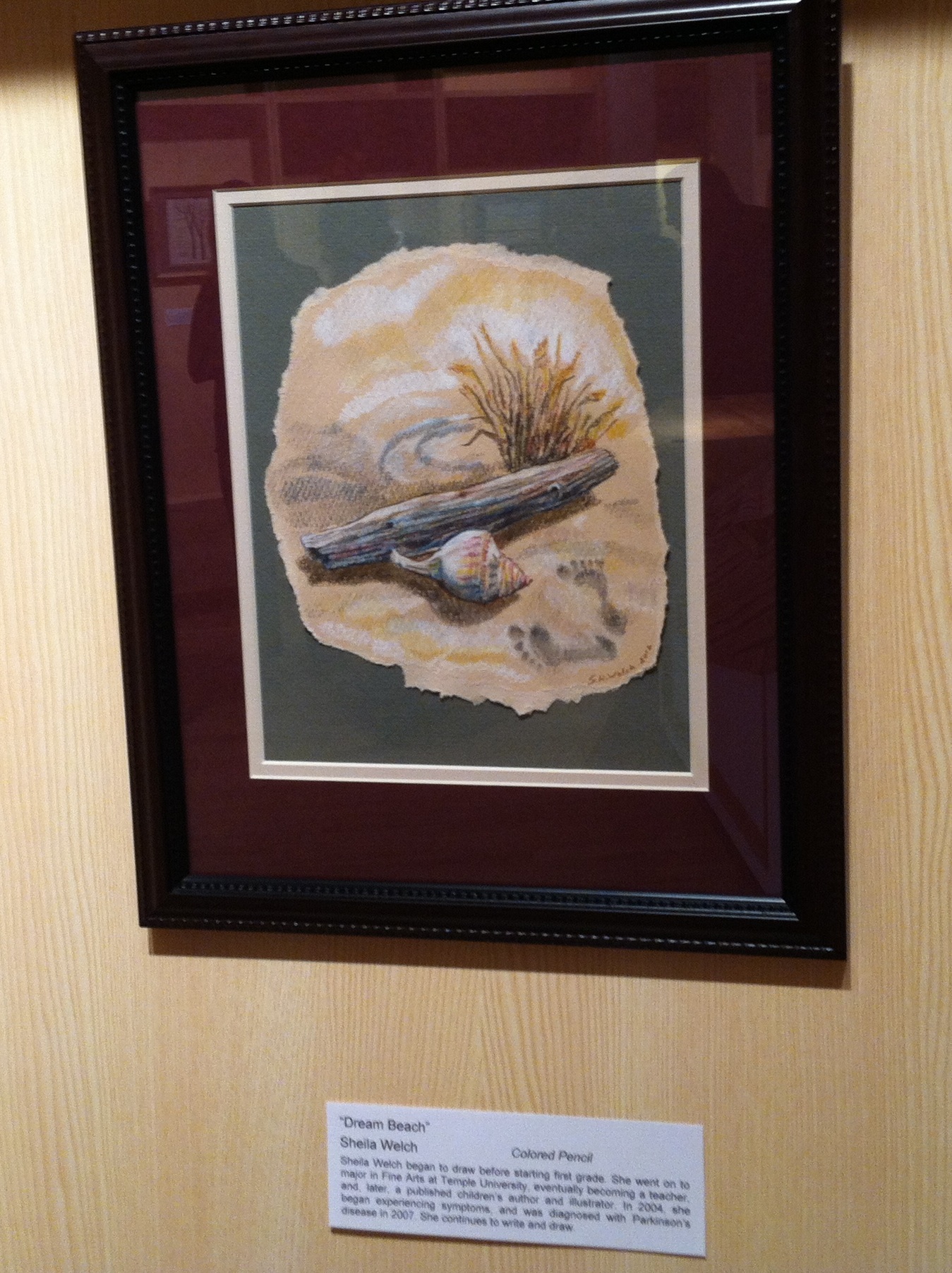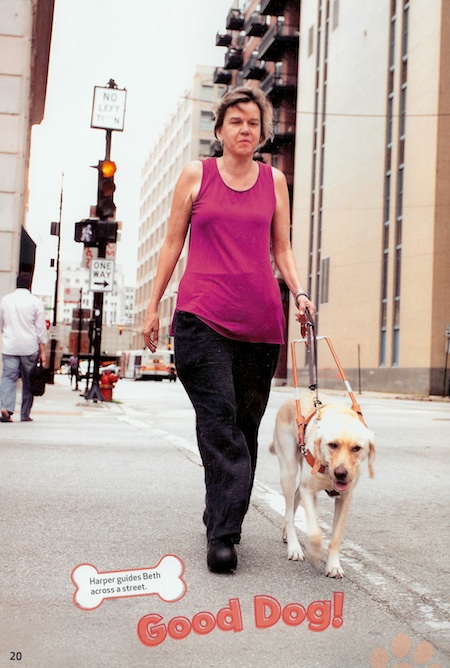I was extremely flattered when author and illustrator Sheila Welch asked me to participate in a book festival she was putting together in Freeport, Ill, and oh so disappointed to have to say no: Freeport is far away from Chicago and had no public transportation options. As you are about to find out from this guest post, Sheila Welch is one determined and resourceful woman, reluctant to take no for an answer. If my Seeing Eye dog Hanni and I took a commuter train as far west as it goes, she said she and her husband Eric could pick us up and drive us the rest of the way.
That car ride back in 2008 gave us a lot of time to talk, and we’ve stayed in touch ever since. I recently asked Sheila to write a guest post on what it’s been like to continue her career as an artist after being diagnosed with Parkinson’s Disease. No surprise here: she rose to the challenge.
The positively best therapy available for me
by Sheila K. Welch
The puzzling symptoms began a decade ago. In the fall of 2004, I had trouble autographing books. Strange. My mother could write her name with a flourish in her late 80s. I noticed, while drawing illustrations, certain movements were awkward and difficult. A few months later, I developed a slight tremor in my right hand.
My family doctor seemed confident that it was nothing serious, and I wanted to believe her. By the spring of 2007, however, waving, clapping, brushing my teeth, quick sketching, handwriting, and typing had all become either impossible or laborious tasks. I could sign my name, but only if I did it slowly and deliberately. And only if no one was watching.
Something was obviously wrong. I suspected Parkinson’s. My husband and I had a dear friend who’d had early onset Parkinson’s Disease (PD), so I was acquainted with this progressively debilitating condition. I went to a neurologist and he told me that I definitely had PD.
Living with Parkinson’s is a balancing act. Medications and exercises have been developed to control many of the symptoms. However, the medications alter brain chemistry and can result in nasty side effects such as extreme drowsiness, and, with prolonged usage, involuntary movements and psychosis.
My future looked bleak. Feeling myself losing abilities that had come naturally and easily for so long, I went into creative overdrive: I revised one novel manuscript. Wrote several stories. Finished revisions on a chapter book. Made illustrated dummy books.
Next I completed a novel that was close to my heart. Several of our children were adopted at school age, and they were the inspiration for WAITING TO FORGET, published by namelos in 2011. Kirkus Book Reviews describes it as “a poignant, realistic tale of child-survivors.” Bank Street College and Pennsylvania School Library Association have included it on their best-books-of-the-year lists.
While working with namelos to get WAITING TO FORGET published, I wrote a picture book manuscript and began sketching illustrations. On New Year’s Day last year, I resolved to work
on a memoir for my family. One hundred words a day added up to 36,500 by December 31.
This spring, I’m doing rough sketches for one of my manuscripts and working on a major revision of a novel. I also created two drawings for an exhibition appropriately called “Art over Adversity.”
While all of these projects take far longer than they would have before my Parkinson’s diagnosis, I’ve discovered that the creative process improves my mood, and that helps me feel better

Sheila’s painting “Dream Beach” was displayed at
the “Art over Adversity” exhibition for Parkinson’s awareness month.
physically. Stress exacerbates all the symptoms of Parkinson’s, but when I’m involved in illustrating a book or I’m writing a short story, the stress level drops.
Equally important: I’ve learned to modify and adapt. I still do presentations at schools and conferences, but I don’t do live demonstrations of my illustrations — I display a sketch I’ve brought from home. To avoid the stress of travel, I use Skype to interact with kids. When the local library hosted the launch of my novel, I offered pre-autographed books for sale.
I’m incredibly fortunate to have my husband Eric. He drives me everywhere, solves my computer issues, and does the household chores. With his help, I have the time and energy to be creative. Our seven children have all been super supportive. The youngest, whose early life was similar to that of my characters in WAITING TO FORGET, now lives in Texas. He has read the novel and tells me that it’s a “real, true” story, which is my most treasured review.
A few weeks ago, I began treatment with a more powerful medication for Parkinson’s disease, and now I can use my right hand to touch type. There’s talk in the PD world of a new medication that might be neuro-protective, but in the meantime, I will happily stick with the positively best therapy available for me — drawing and writing.




 Whitney and I just got back last night from a
Whitney and I just got back last night from a